Expression
An expression in mathematics is a combination of numbers, symbols, and operators (such as +, -, ×, ÷) that represents a value. Expressions can be simple or complex, but they are always used to represent a specific value or quantity.
Types of Expressions
There are several types of expressions:
- Numerical Expression: A combination of numbers and operations, such as 5 + 3 or 4 × 6.
- Variable Expression: An expression that contains variables, such as 3x + 2 or 4y - 7.
- Algebraic Expression: A combination of variables, numbers, and operations, such as 2x + 5y or 3a - 2b + c.
Understanding Expressions
To understand expressions, it's important to know the following:
- Terms: The parts of an expression that are separated by + or - signs. For example, in the expression 3x + 2y - 5, the terms are 3x, 2y, and -5.
- Coefficient: The numerical factor of a term. In the term 4x, the coefficient is 4.
- Constants: Numbers in an expression that do not change. In the expression 2x + 3, the constant is 3.
- Like Terms: Terms that have the same variables raised to the same powers. For example, 5x and 3x are like terms.
Practice Problems
Now, let's practice some expressions!
- Simplify the expression: 2x + 3y - 5x + 7y
- Write an expression for the following statement: "Twice a number added to 5."
- Combine the like terms in the expression: 4a + 2b - 3a - 5b
Summary
Expressions are an essential part of mathematics and are used to represent quantities and values in various contexts. By understanding the types of expressions and the components within them, you can work with expressions effectively and solve problems in algebra and arithmetic.
.◂Science Worksheets and Study Guides Third Grade. Matter and its properties
Study Guide Matter and its properties
Matter and its properties  Activity Lesson
Activity Lesson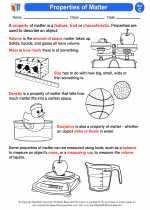 Properties of Matter
Properties of Matter  Worksheet/Answer key
Worksheet/Answer key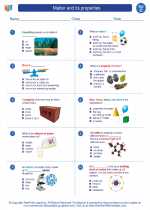 Matter and its properties
Matter and its properties  Worksheet/Answer key
Worksheet/Answer key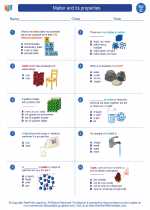 Matter and its properties
Matter and its properties  Worksheet/Answer key
Worksheet/Answer key Matter and its properties
Matter and its properties  Worksheet/Answer key
Worksheet/Answer key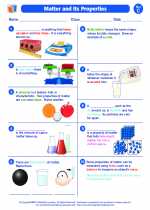 Matter and its properties
Matter and its properties  Worksheet/Answer key
Worksheet/Answer key Fact Finding
Fact Finding  Vocabulary/Answer key
Vocabulary/Answer key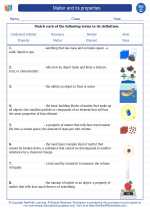 Matter and its properties
Matter and its properties  Vocabulary/Answer key
Vocabulary/Answer key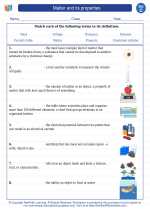 Matter and its properties
Matter and its properties 

 Activity Lesson
Activity Lesson
 Worksheet/Answer key
Worksheet/Answer key
 Worksheet/Answer key
Worksheet/Answer key
 Worksheet/Answer key
Worksheet/Answer key
 Worksheet/Answer key
Worksheet/Answer key
 Worksheet/Answer key
Worksheet/Answer key
 Vocabulary/Answer key
Vocabulary/Answer key
 Vocabulary/Answer key
Vocabulary/Answer key

The resources above cover the following skills:
PHYSICAL SCIENCE
Motion and Stability: Forces and Interactions
Explore objects that can be manipulated in order to determine cause-and-effect relationships (e.g., distance between objects affecting strength of a force, orientation of magnets affecting direction of a magnetic force) of electric interactions between two objects not in contact with one another (e.g., force on hair from an electrically charged balloon, electrical forces between a charged rod and pieces of paper) or magnetic interactions between two objects not in contact with one another (e.g., force between two permanent magnets or between an electromagnet and steel paperclips, force exerted by one magnet versus the force exerted by two magnets).
Apply scientific ideas about magnets to solve a problem through an engineering design project (e.g., constructing a latch to keep a door shut, creating a device to keep two moving objects from touching each other such as a maglev system).